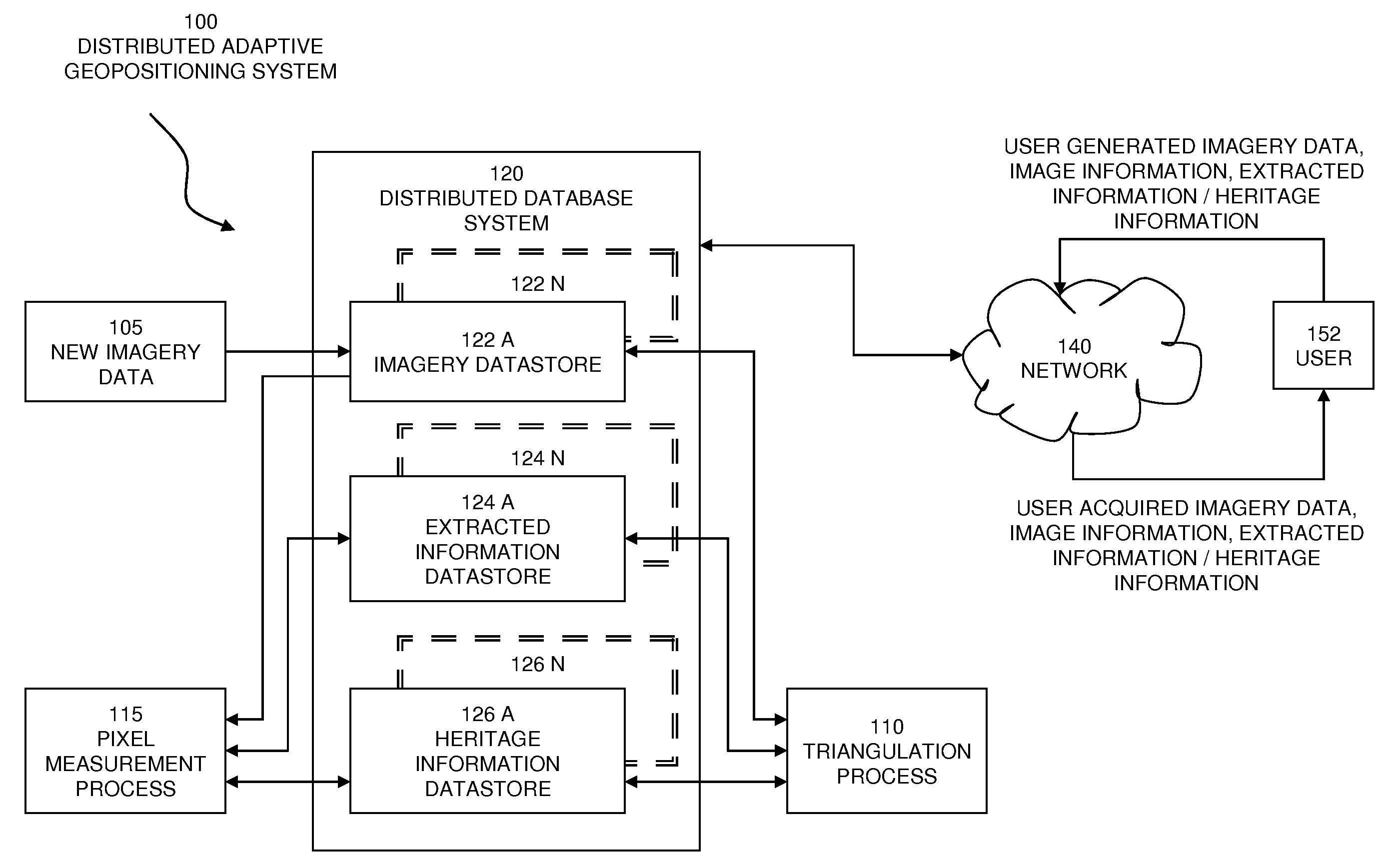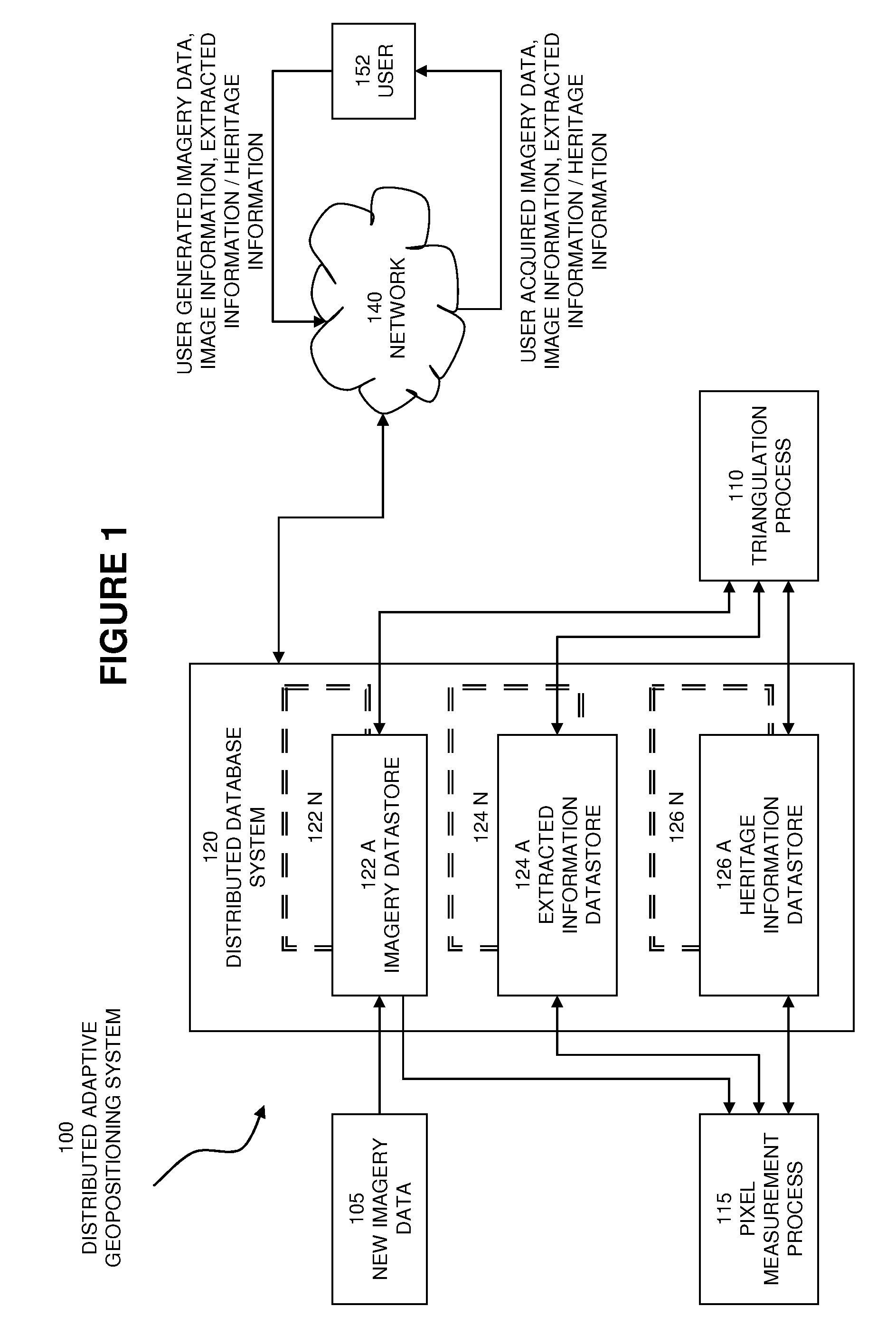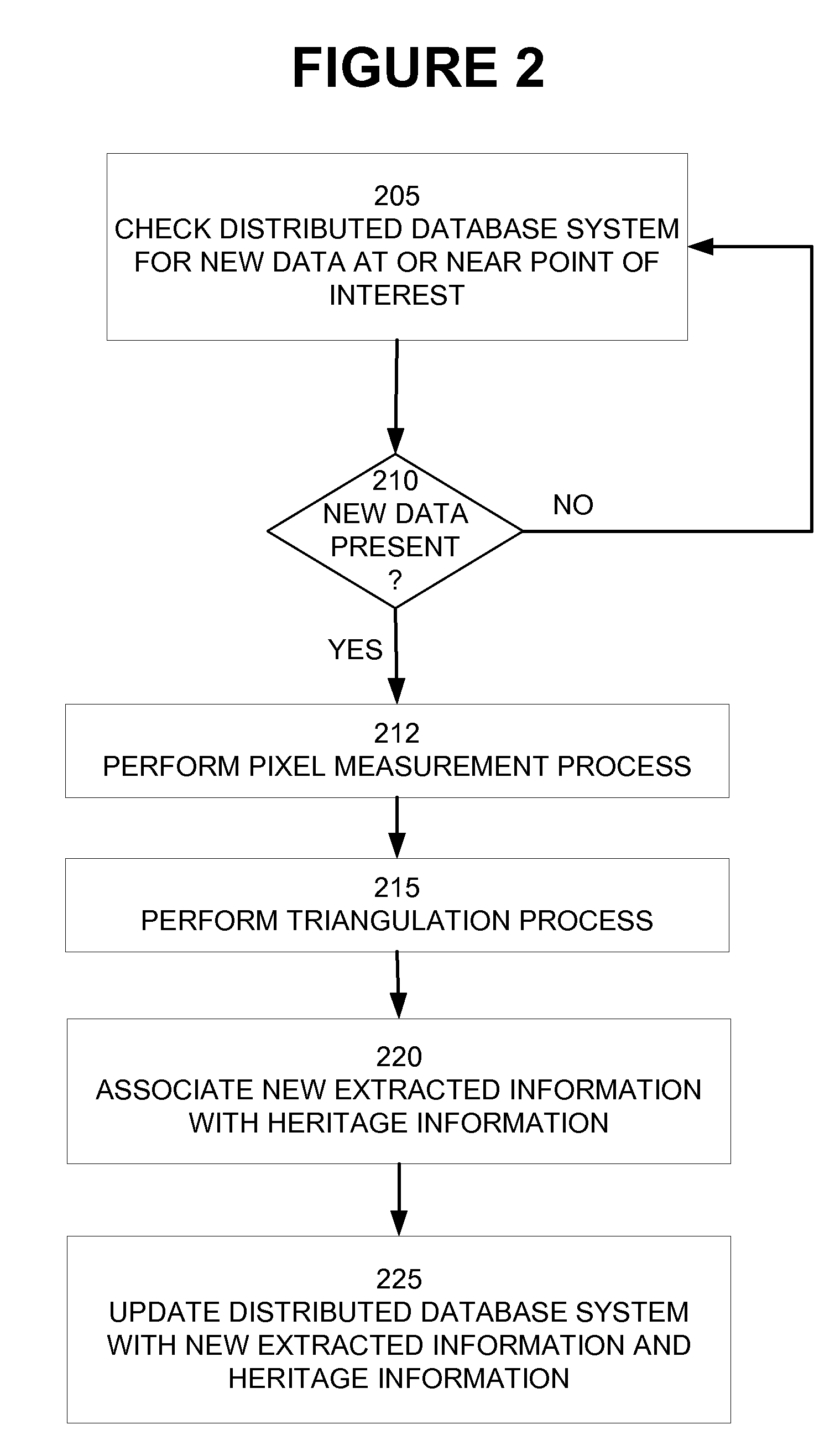System and methods for dynamically generating earth position data for overhead images and derived information
a dynamic generation and overhead image technology, applied in the field of system and methods for dynamic generation of earth position data, can solve the problems of inability to apply a dem re-computed inability to leverage technology to process information digitally in a way conducive to modern computer environments, and inability to re-apply to a dem re-compute over the same area, so as to improve the accuracy of “product” imagery
- Summary
- Abstract
- Description
- Claims
- Application Information
AI Technical Summary
Benefits of technology
Problems solved by technology
Method used
Image
Examples
Embodiment Construction
[0026]For the purposes of this Application, the following terms have the meaning ascribed to them:
[0027]“Imagery data” means the raw data in pixel form that defines the image.
[0028]“Image information” means data about an image such as the date the image was taken, the sensor, vehicle, and platform used to capture the image, sensor model support data parameters, intrinsic error data, and an image identifier.
[0029]“Heritage information” means any information relevant to the computation of extracted information. This includes, but is not limited to, image pixel measurements and error estimates, and the record of DEM edits performed over an area.
[0030]“Extracted information” means information derived from one or more images through manual or automated means. This includes, but is not limited to, feature vectors consisting of individual ground points and vertexes of line, polygon, and 3-D volume features; DEM posts and DEM edits, such as breaklines, monotonic drainage lines, and polygons...
PUM
 Login to View More
Login to View More Abstract
Description
Claims
Application Information
 Login to View More
Login to View More - R&D
- Intellectual Property
- Life Sciences
- Materials
- Tech Scout
- Unparalleled Data Quality
- Higher Quality Content
- 60% Fewer Hallucinations
Browse by: Latest US Patents, China's latest patents, Technical Efficacy Thesaurus, Application Domain, Technology Topic, Popular Technical Reports.
© 2025 PatSnap. All rights reserved.Legal|Privacy policy|Modern Slavery Act Transparency Statement|Sitemap|About US| Contact US: help@patsnap.com



